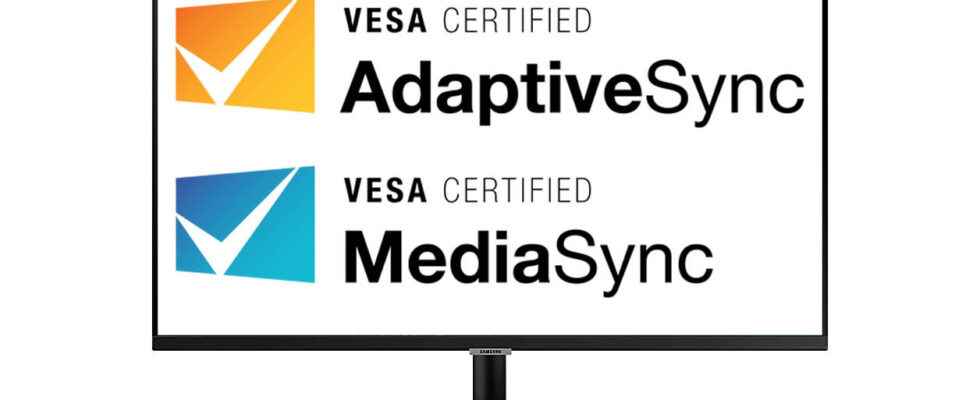The American technology association VESA wants to bring order to displays compatible with the Variable Refresh Rate (variable refresh rate) and publishes its certification program today. The entity that brings together many industrialists – Microsoft, Samsung, LG, Lenovo, Intel, Apple, etc. – is today releasing its “Adaptive-Sync Display Compliance Test Specification” program as well as the logos used to choose screens that have successfully passed a battery of tests.
The goal: to enable the public to buy a screen or television that perfectly manages adaptive sync and its flagship function: the variable refresh rate (or VRR).
The VRR, which must be taken into account by both the source (graphics card) and the screen, makes it possible to avoid visual artifacts (jumps, image tearing) when the two are not in phase. A more compute-intensive scene in a 3D video game often not only shows slowdown, but also display lags in the image.
The problem is that for now, it’s a jungle of certifications. This lack of a common standard is detrimental to the development of adaptive synchronization technologies such as VRR and therefore limits their distribution. However, the standards, it is precisely the dada of VESA. A consortium behind – among other things – the DisplayPort connector standard or DisplayHDR.
Transparency to put AMD and Nvidia in agreement

The Adaptive Sync Display CTS is not a technology, but a product validation and certification circuit that has the good taste to be agnostic and transparent. What is sorely lacking at present: on the one hand we are entitled to FreeSync (open) from AMD and on the other we have G-Sync from Nvidia (proprietary), the two protocols getting along little or evil.
And the older and more powerful of the two (G-Sync) is not very transparent – Nvidia speaks of 300 tests, but without disclosing them. The new VESA standard details very precisely its test protocols by explaining them (average of several gray to gray measurements, protocol carried out at room temperature, etc.)
For the consumer, the future logos affixed to the boxes are also the guarantee of a certification by a third party rather than a simple self-certification, too often the norm in this industry.
Two standards for two uses

The VESA gave birth to two levels of standard: “MediaSync” at the entry level to guarantee an impeccable video score (range from 48 Hz to 60 Hz) by correcting compression jumps in particular. And a more high-end standard, intended for gamers: “AdaptiveSync”.
More demanding in terms of latency, it is obviously this one that will be the most popular with demanding players. Covering all MediaSync requirements, its logo will reflect the maximum refresh rate of the panel – from 144hz and above. And when we talk about maximum frequency, it’s without overclocking: only the native maximum frequency of the panel can be qualified. What limit the marketing ardor which often sells overclocked screens, but sometimes displaying visual parasites.
Only for Display Port

One of the limits of this standard lies in the certification body itself: VESA being responsible for the DisplayPort standard, it is only through this interface that the screens are certifiable and certified. There is therefore no possibility of guaranteeing the same performance via an HDMI socket, which depends on another consortium.
If this is fairly inconvenient for PCs with a dedicated graphics card, it may annoy owners of cards integrated into CPUs or owners of laptops limited to an HDMI output. Same for televisions. But objectively, DisplayPort is widespread in the computing world and few consumers should find themselves stuck with HDMI. Even HP Omen X Emperium TV gamer screens are equipped with DP sockets.
Also see video:
Also see video:
It now remains for manufacturers to start having their products certified (which has a cost) before seeing them arrive in the weeks and months to come. It is important to note that the Adaptive Sync Display CTS standard is available not only for external displays, but also for portable PC displays. Laptop gamers should therefore also benefit from this new technical validation.
Sources: press release VESAvia AnandTech and The Verge
